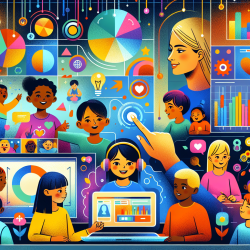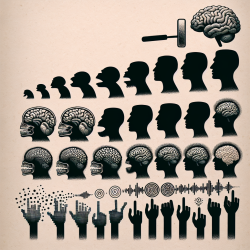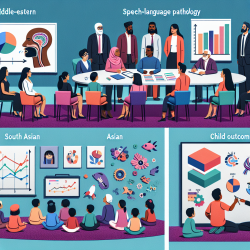Introduction
In the realm of speech-language pathology, the integration of multimedia into therapeutic practices is gaining traction. The study titled Differences in Memory, Perceptions, and Preferences of Multimedia Consumer Medication Information: Experimental Performance and Self-Report Study offers valuable insights into how multimedia can be harnessed to improve comprehension and engagement, even if it does not directly impact memory. This blog will explore how these findings can be applied to enhance outcomes for children in speech therapy, particularly through online platforms like TinyEYE.
The Study's Key Findings
The research investigated the impact of multimedia on memory, perceptions, and preferences in the context of consumer medication information (CMI). Participants were exposed to three formats of CMI: text, text + images, and narration + images. The study revealed that while multimedia did not significantly enhance memory recall, it positively influenced participants' perceptions of comprehensibility and design quality, with a strong preference for the text + images format.
Implications for Speech-Language Pathology
Although the study focused on medication information, its findings have broader implications for speech-language pathology, especially in the context of online therapy services like those provided by TinyEYE. Here’s how practitioners can leverage these insights:
- Enhancing Engagement: By incorporating images and multimedia elements into therapy sessions, practitioners can make sessions more engaging for children, potentially improving their attention and participation.
- Improving Comprehensibility: Multimedia can simplify complex concepts, making them more accessible to children with varying levels of understanding and cognitive abilities.
- Design Quality: A well-designed multimedia presentation can enhance the perceived quality of therapy sessions, making them more enjoyable and effective for children.
Encouraging Further Research
While the study did not find significant memory improvements with multimedia, it underscores the importance of considering both subjective perceptions and objective outcomes in therapy. Practitioners are encouraged to explore further research in the following areas:
- Tailored Multimedia Interventions: Investigate how personalized multimedia content can be developed to cater to individual children's needs and preferences.
- Longitudinal Studies: Conduct studies over extended periods to assess the long-term impact of multimedia on learning and retention in children.
- Diverse Populations: Explore the effects of multimedia on different age groups and children with varying levels of health literacy and cognitive abilities.
Conclusion
The integration of multimedia into speech-language pathology holds promise for enhancing therapy outcomes, particularly in online settings. By focusing on improving engagement and comprehensibility, practitioners can create more effective and enjoyable learning experiences for children. As we continue to explore the potential of multimedia, it is crucial to remain data-driven and open to new insights that can transform therapeutic practices.
To read the original research paper, please follow this link: Differences in Memory, Perceptions, and Preferences of Multimedia Consumer Medication Information: Experimental Performance and Self-Report Study.










